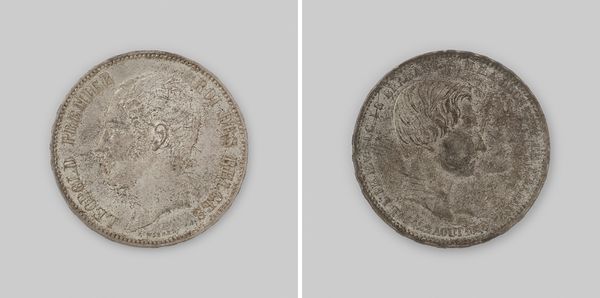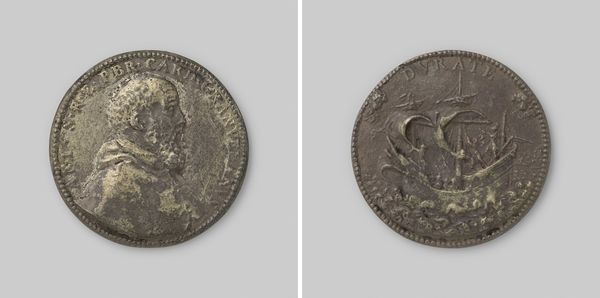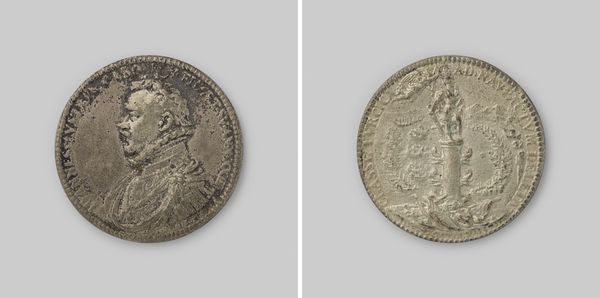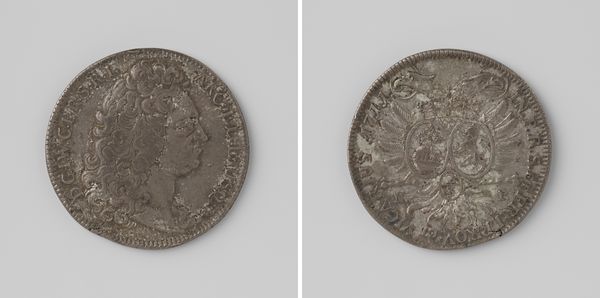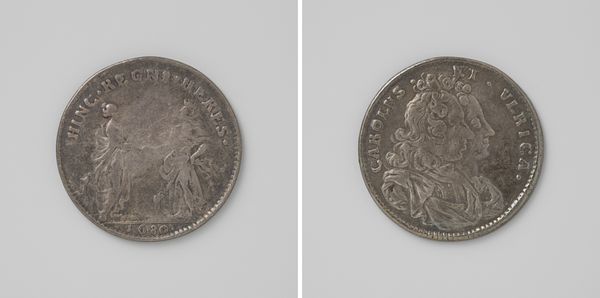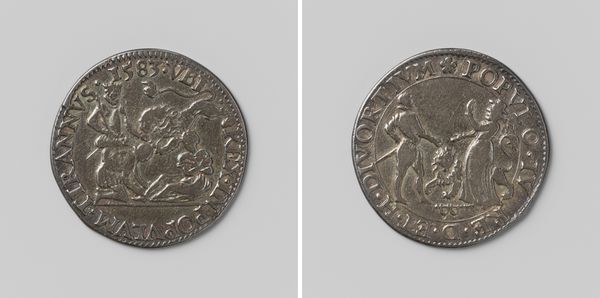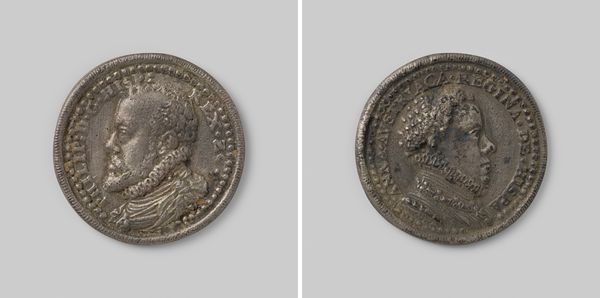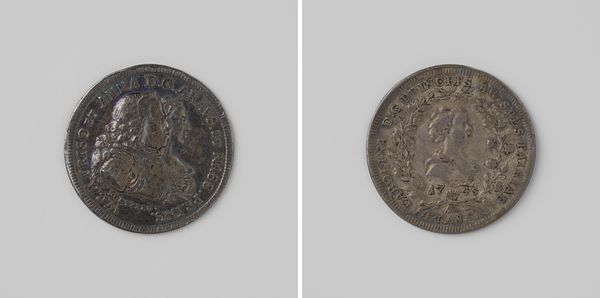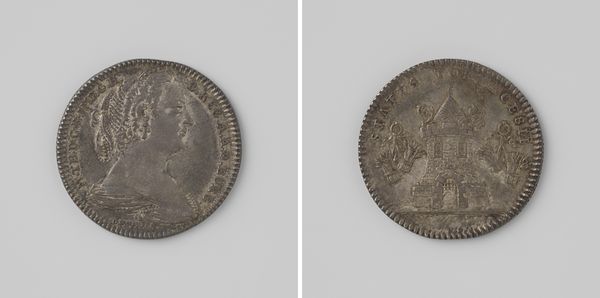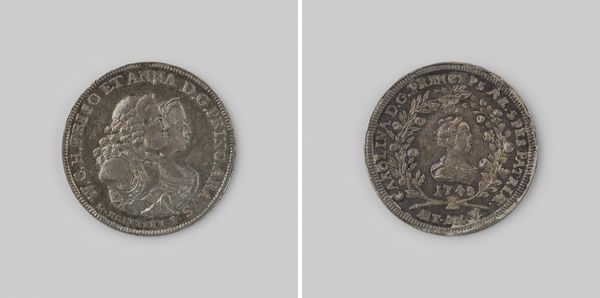
Twintig kreuzer, noodmunt uit Mantua, geslagen door generaal Gorkowski ter ere van Ferdinand I, keizer van Oostenrijk, tijdens het beleg 1848
0:00
0:00
metal
#
portrait
#
metal
#
history-painting
#
coin
#
realism
Dimensions: diameter 2.7 cm, weight 6.54 gr
Copyright: Rijks Museum: Open Domain
This silver coin, struck in Mantua during a siege, bears the profile of Ferdinand I, Emperor of Austria. On its reverse, we find the double-headed eagle, a powerful emblem extending back to antiquity, resonating through the Roman Empire and into the heraldry of numerous European dynasties. The eagle, initially a symbol of imperial power and victory, evolves through time. Consider its appearance on Roman standards versus its adoption by the Holy Roman Empire. Here, the double-headed eagle suggests a dual authority, a mirroring of power that echoes the complexities of empire itself. Such symbols are not static; their meanings shift and accrue layers of significance across generations. The urgency and desperation are palpable in the roughly stamped metal, a potent reminder of how symbols are imbued with new meaning through psychological and historical circumstance. The eagle, a creature of the sky, here becomes grounded in the harsh realities of siege. It reminds us that images evolve, adapt, and resurface, laden with the weight of history.
Comments
No comments
Be the first to comment and join the conversation on the ultimate creative platform.
